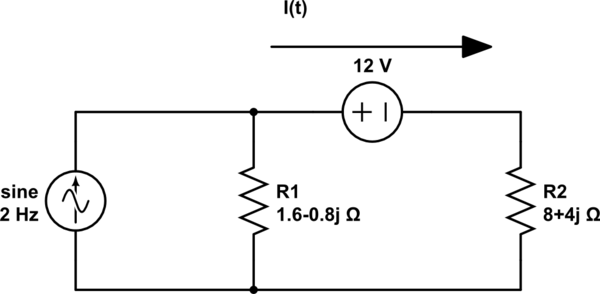
simulate this circuit – Schematic created using CircuitLab
The DC voltage source has an angular frquency of 0 rad/sec.
Do I need to:
- short circuit the DC voltage source
- calculate I(t) in time domain
- open circuit the AC current source
- calculate I(t)
- And finally, add the two together
Or can I just do a Kirchoff Voltage Law in the right loop? $$(1.6-0.8j)I+12+(8+4j)I=0$$
This is the original circuit before I simplified the impedance:

